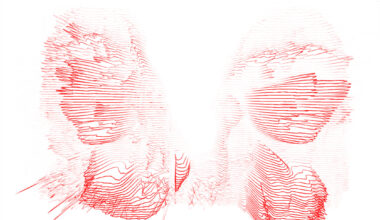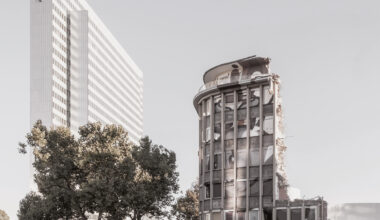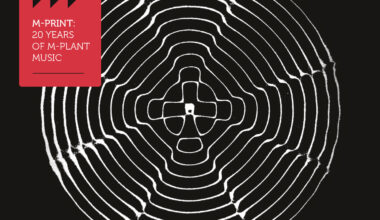The one-time Battles frontman brings his collaborative performance piece to the studio

Battles were always a strange proposition. Signed to Warp in the UK, they operated in a weirdly other space where it was okay to fuse big synth hooks, alternative rock gestures and the kind of off-centre beats that Warp acts over the years should have trademarked.
Following his departure from the group, frontman Tyondai Braxton has reinvented himself as a composer of bold electronic pieces that slot relatively well into the minimalist firmament, even if they take their impulse from electronica rather than the classical school. He has worked with Philip Glass, one of the guiding lights of minimalism, as well as composing material for contemporary modern orchestras like the Kronos Quartet and the Bang On A Can All-Stars.
The original version of Braxton’s ‘HIVE’ was performed at New York’s Guggenheim Museum in 2013, with five musicians seated in purpose-built pods at the foot of the gallery’s famous rotunda. There is perhaps no greater validation of the artistic quality of your work than having it performed in one of the world’s most prestigious galleries, but the concept and spectacle of the Guggenheim presentation did rather sound like yet another example of big budget electronic music for a monied audience.
Braxton himself has described ‘HIVE’ as a social composition. This studio version, dubbed ‘HIVE1’ to differentiate it from the live piece, suffers somewhat from not being a collaborative effort. The album is effectively Braxton solo noodling around on various bits of synth kit, and at times you’d be forgiven for viewing it as nothing more than downtime experimentation. There are points where it sounds a little too clinical, leaving a nagging feeling that it would have had more of an atmosphere if Braxton had released a concert recording instead of a studio interpretation.
But there are also times when the case for Braxton as a lauded musical wunderkind is patently obvious. ‘Amlochley’, for instance. While this lengthy track could initially be mistaken for a malfunctioning ZX Spectrum sound chip, once the layers coalesce around the midpoint into a solid web of jerky beats, bass tones and spiralling synth noises, ‘HIVE1’ starts to seem more like a considered, composed opus than a mere book of sketches. The same credentials feed through on ‘Gracka’, which was written in tribute to Braxton’s wife, though given the manic handclaps and the erratic back and forth of the piece, one wonders what he’s actually trying to convey about her.
It’s the closing track, ‘Scout 1’, that stands apart from everything else. Here, Braxton constructs a locked rhythmic cycle of percussive components and earthy pulses, before adding ominous synth swells and squeaky melodic arpeggios until it all drops out and builds back up at a different tempo. ‘Scout 1’ feels like the most complete realisation of what Braxton set out to do with the ‘HIVE’ project, generating an industrious, busy, interconnected ambience and the closest approximation of the collaborative energy of the original live performances.





